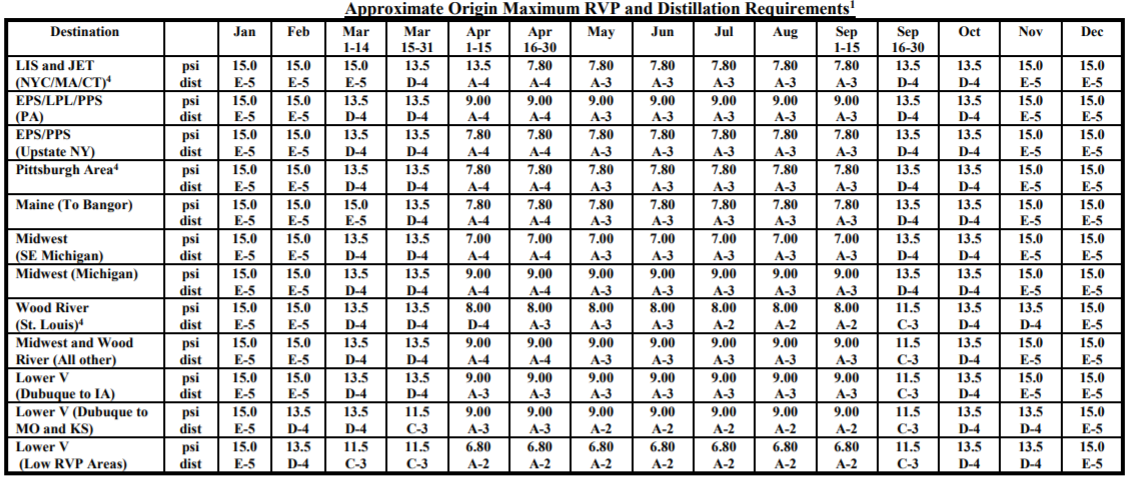According to the EPA, RVP is an abbreviation for Reid Vapor Pressure, a common measure of and generic term for gasoline volatility. EPA regulates the vapor pressure of gasoline sold at retail stations during the summer ozone season (June 1 to September 15), to reduce evaporative emissions from gasoline that contribute to ground-level ozone and diminish the effects of ozone-related health problems. RVP is regulated throughout the distribution network of petroleum from the refiners to the pipeline shippers, distributors, retailers, and consumers. RVP is also regulated based upon geographic region as specified in the 1990 Clean Air Act. The EPA set the RVP standard at 9.0 psi for designated volatility attainment areas… and the RVP standard at 7.8 psi for certain designated volatility nonattainment areas. Since 1990 geographic regions have come and gone from nonattainment areas with the help of waivers and pollution cleanup.
The question remaining is how this product will flow through the system in order to get into our vehicles in time for the “summer grade” switchover. The first step in the process is that refiners begin to produce and ship lower RVP subgrade material. Next, pipeline shippers are required to begin sending lower RVP products through their systems in order to have their large bulk tanks turned to low RVP by (See Buckeye’s chart below). Once completed, distributors are required to start purchasing and storing lower RVP into their facilities in order to be compliant by the date required for their area. Lastly, retail stations are required to have all of their storage tanks at the low RVP level by the date required for their area so that consumers will be burning the low RVP fuel by the beginning of summer. Refer to the chart below for compliant dates.
Why is this important? Well, the simple answer is price. Cleaner fuel equates to more expensive fuel. During the shipping phase, the price delta between low and high RVP can be as much as 15 cents per gallon. At the retail level, consumers can expect to see a price difference passed along to them. Therefore, as consumers and distributors we should be cognizant of these upcoming dates and therefore not react when prices rise throughout the system as we approach the summer months.
https://www.epa.gov/gasoline-standards/gasoline-reid-vapor-pressure
http://www.buckeye.com/LinkClick.aspx?fileticket=9iaDRdk9OOs%3d&tabid=125




